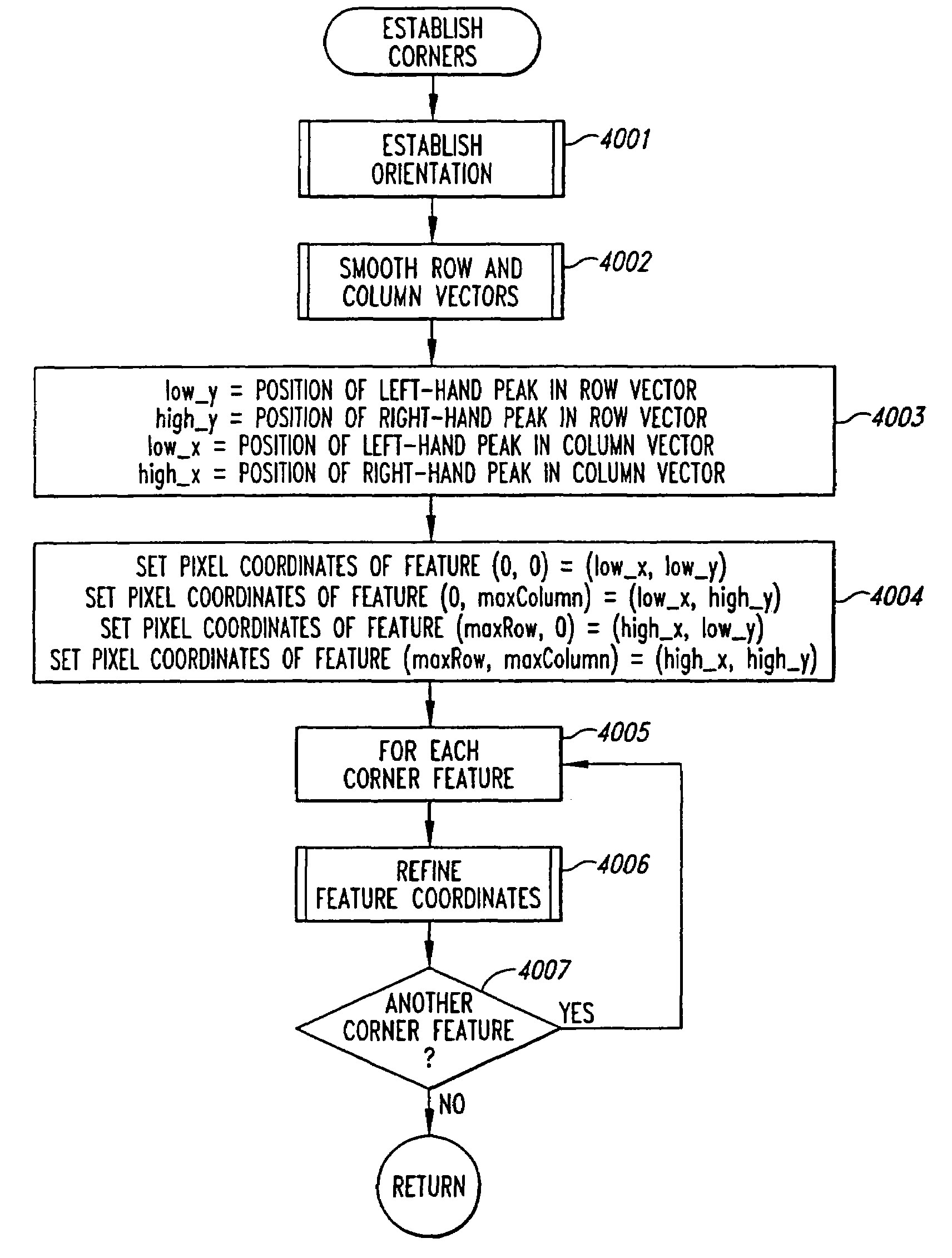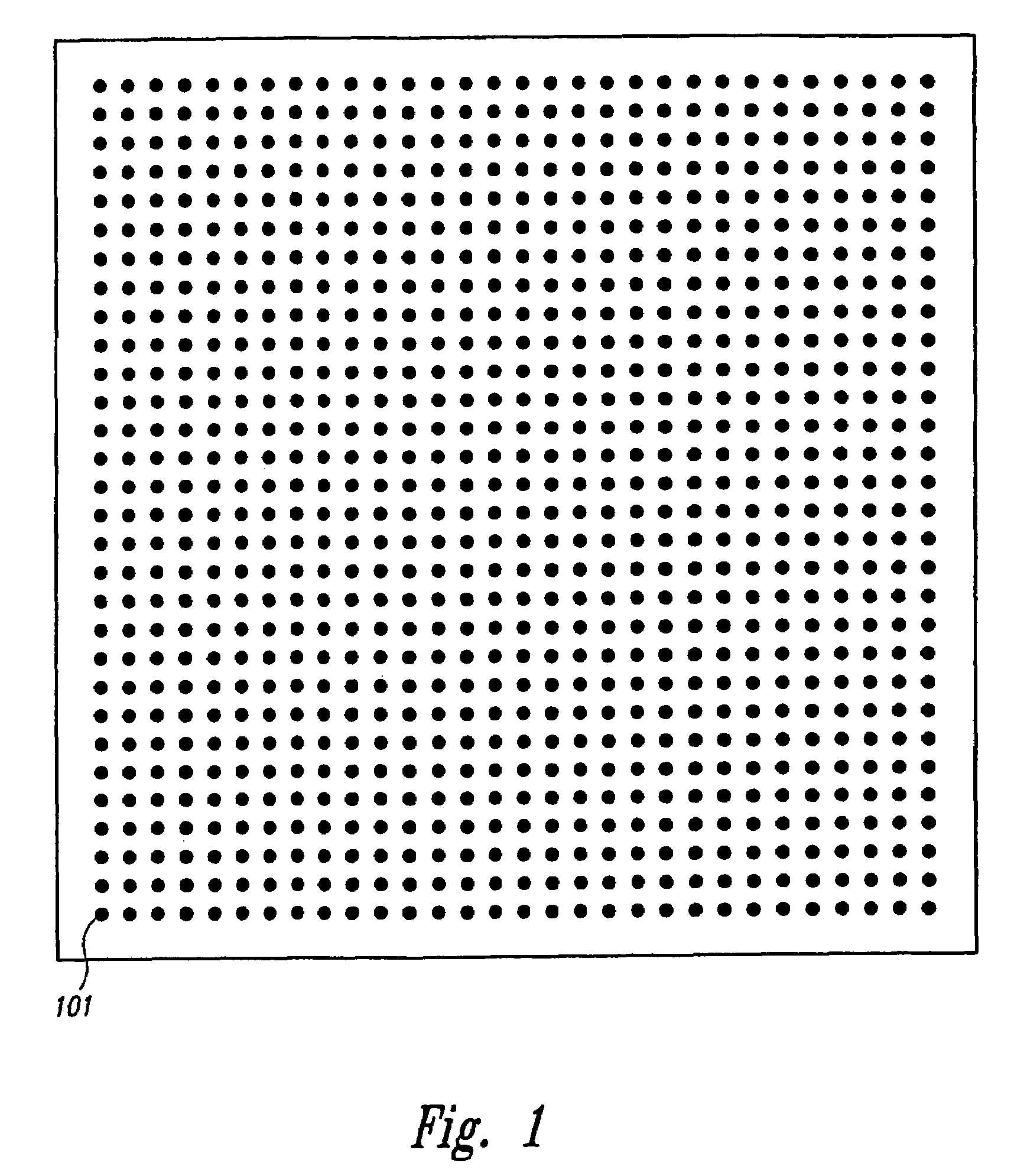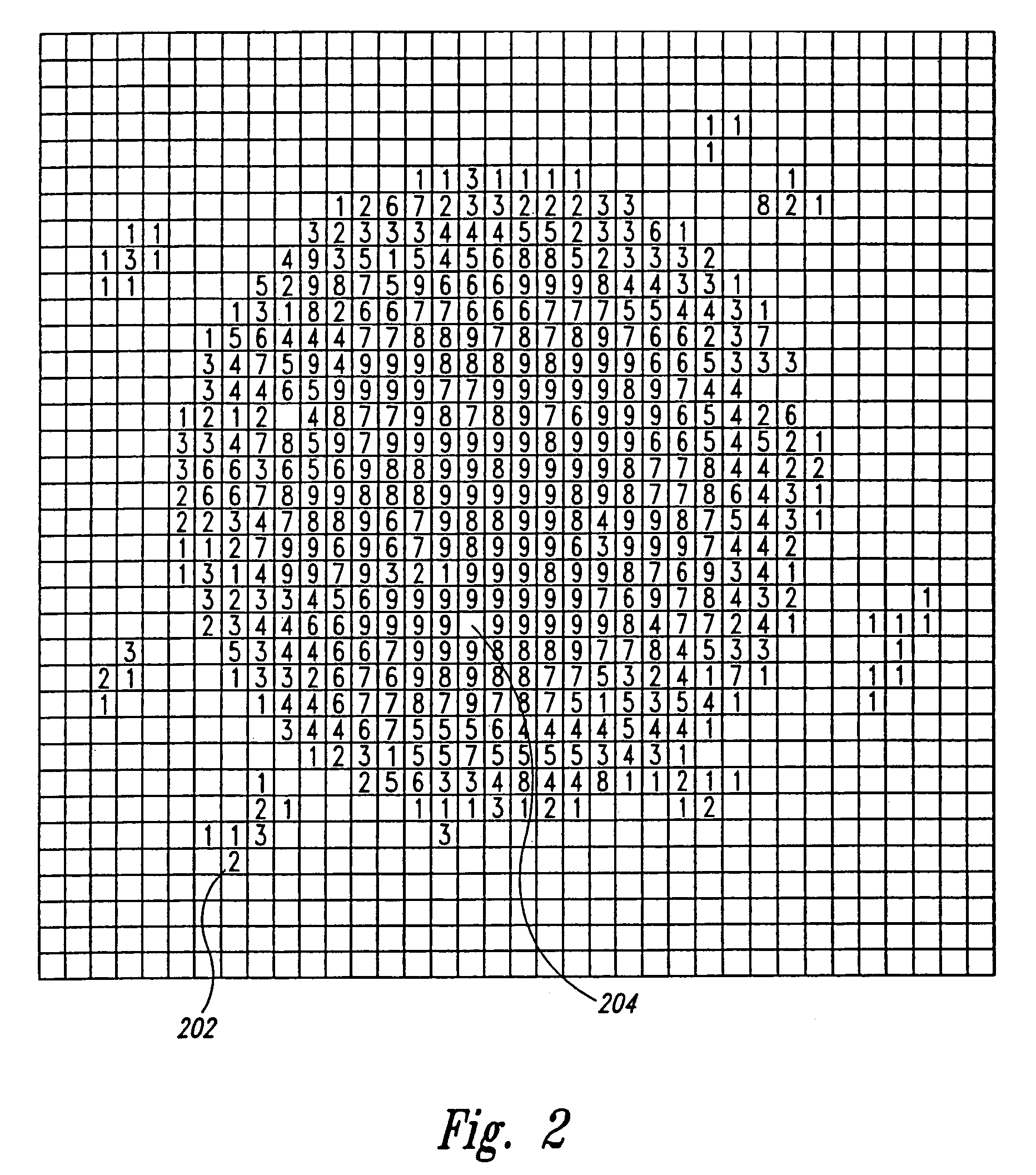Method and system for extracting data from surface array deposited features
a technology of surface arrays and features, applied in image analysis, image enhancement, instruments, etc., can solve the problems of noise, variation, and deviation of scan images of molecular array features, and achieve the effect of reducing the number of scan images
- Summary
- Abstract
- Description
- Claims
- Application Information
AI Technical Summary
Benefits of technology
Problems solved by technology
Method used
Image
Examples
Embodiment Construction
[0055]When one item is indicated as being “remote” from another, this is referenced that the two items are at least in different buildings, and may be at least one mile, ten miles, or at least one hundred miles apart. “Communicating” information references transmitting the data representing that information over a suitable communication channel (for example, a private or public network). “Forwarding” an item refers to any means of getting that item from one location to the next, whether by physically transporting that item and includes, at least in the case of data, physically transporting a medium carrying the data or communicating the data. An array “package” may be the array plus only a substrate on which the array is deposited, although the package may include other features (such as a housing with a chamber). A “set” or a “sub-set” may have one or more members (for example, one or more features). Reference to a singular item, includes the possibility that there are plural of th...
PUM
 Login to View More
Login to View More Abstract
Description
Claims
Application Information
 Login to View More
Login to View More - R&D
- Intellectual Property
- Life Sciences
- Materials
- Tech Scout
- Unparalleled Data Quality
- Higher Quality Content
- 60% Fewer Hallucinations
Browse by: Latest US Patents, China's latest patents, Technical Efficacy Thesaurus, Application Domain, Technology Topic, Popular Technical Reports.
© 2025 PatSnap. All rights reserved.Legal|Privacy policy|Modern Slavery Act Transparency Statement|Sitemap|About US| Contact US: help@patsnap.com



